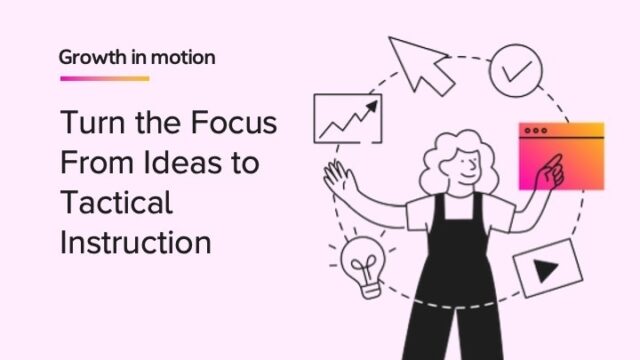
We all have those days. Lesson plans don’t pan out the way you envisioned them, your students seem determined to drive you over the proverbial edge, the classroom is a total mess, a parent demands a meeting at the worst moment. Is this cosmic punishment for that time in fifth grade you made your teacher question their career choice?
Take solace in the fact that even the most seasoned teachers have these days. But when a rough day pops up, how do we handle it? Aspirin and a hot bath are awesome, but they’re waiting at home, and you need relief now. Lunch break is way too short for a bubble bath and a Netflix binge (but maybe work that into your next contract)! What to do?
As teachers and professionals, we have two distinct ways to navigate the day and ride those waves of chaos. We can be proactive or reactive. How can we distinguish these two methods, and what are some proactive vs. reactive classroom management examples? Let’s find out!
What is Proactive and Reactive Classroom Management?
Reactive classroom management
Reactive classroom management is not all bad. There’s something to be said for flexibility and thinking on the fly. However, in really tough situations, reactive classroom management can be tricky at best. You can deal with certain issues in the moment — no big deal. But when you have a string of problems coming at you, you may not want to be stuck making a bunch of in-the-moment judgment calls. And as the day wears you down, your quick choices may not always be the best. We’re human, after all!
Proactive classroom management
Let’s talk about the alternative. Even if trying days are few and far between, we want to be prepared. While reactive classroom management involves taking things as they come, proactive classroom management is the fine art of anticipating an issue and having solid contingency plans in place.
Of course, you cannot predict every curveball. You will always need to have a strong reactive management skill set for those times when the madness is unavoidable. But, if you embrace proactive classroom management, you will not need to rely on reactive teaching nearly as often.
Examples of Proactive and Reactive Behavior Management Strategies
What does reactive classroom management look like?
Imagine this: You get to school and realize you left some important supplies at home. Now you’ll have to alter or altogether scrap your big activity of the day. You do not have a solid backup plan, so you’ll just have to make do. You check your day planner and realize that the recess supervision day you swapped out weeks ago has now come back to haunt you — and it’s cold outside, and you do not have all the proper gear. You have an early meeting, during which a parent stops by without warning. They want to talk about their child’s latest test score, and they’re not happy. Once you’re teaching, you discover that your students are not having a great day either, and there are arguments happening left and right. The class pet has tummy issues. You get the idea. Can I just go home at noon?
You’ll have reactions to each of these problems, and, like the star teacher that you are, you’ll likely find little ways to at least get through each roadblock. But at the end of the day, how will you be feeling? Exhausted perhaps — worn out, and a little disillusioned. Now, if this is just a single day and a similar one only occurs once or twice more in a school year, reactive classroom management may work for you. If this starts to happen monthly, weekly, or (oh my goodness) every other day, you’ll be on the fast track to burnout city.
What does proactive classroom management look like?
Now imagine a similar day to the one described above. You get to school and realize that you forgot your supplies. No big deal — you have five awesome just-in-case activities in a basket behind your desk. Those are handy for forgetful times, and maybe for a substitute teacher as well. You’ll just fall back on one of those activities instead and put a reminder in your phone or day planner to get those other supplies for tomorrow. Phew, your proactive planning has saved you!
You check your plan for the day and see that you have supervision duties. You may not have your A-game scarf and hat (the kind made for the Arctic Circle, because you’re no longer too cool to stay warm), but you have old faithful in your drawer at all times: a decent but cheap hat and some mittens that aren’t your favorite but will do in a pinch. Fantastic! No hypothermia for you today!
Your meeting begins and a parent swings by for an impromptu chat. Luckily, you have files of student work examples. You graciously set up the parent with their child’s work to peruse, pass them a cup of coffee, and let them know you’ll be ready for a quick talk in 20 minutes. In the meantime, they can see what their child has been doing and get a clearer picture of their progress ahead of your chat. If you want to be really proactive in this situation, it works for (most) parents if you have a super clear plan laid out for meetings beforehand. Let everyone know from the outset that you are happy to set up meetings or phone calls with a little notice, and carve out time during one prep period a cycle to either meet or talk to any concerned parents. Better still, schedule regular check-ins with parents and discuss the good things happening, mixed in with an area or two that could use a little extra work. Student issues will be nipped in the bud, parents will feel informed, and you’ll have to deal with fewer drop-ins.
If you find that your students are not having a great day behavior-wise, what can you do proactively? You know that these days will happen, regardless of the grade level that you teach. A proactive approach is to first have clear classroom rules and guidelines that you regularly revisit. Teach students what to do if they are feeling frustrated. Is there a quiet spot in your room for a reading break? Do they know that they can approach you with problems or write about their feelings when needed? Have strategies set up to avoid total meltdowns. If it’s just one of those days, have a backup plan at the ready. Brainstorm before the school year even begins, and have a list handy in your desk drawer. Perhaps there are brain-break activities you’ll want to use, outside time to get extra energy out, or calming techniques to get your classroom back to a more zen place. Have tranquil music ready to go, detailed coloring pages, and a great book to read from.
Oh, yes, almost forgot. The class gerbil isn’t feeling well. If you have a classroom pet, or some kind of similar classroom extra that requires attention, be prepared! Find out from your administration at the start of the school year what the protocol is if things go awry. Have your students set up with class jobs that include general tidying and caring for any furry classroom friends. Everyone can and should pitch in. It’s an important learning experience for students that builds a sense of community and belonging and will save you from a headache or two (or a dozen).
Both Proactive and Reactive Classroom Management Strategies Have Their Place
Reactive classroom management has its place, to be sure. But a little proactive management will go a long way. Plan for those likely bumps in the road that happen to the best of us, and enjoy a much smoother teaching experience that will have others envious of your calm, cool, and collected classroom.
This article was adapted from a blog post initially developed by the education technology company Classcraft, which was acquired by HMH in 2023. The views expressed in this article are those of the author and do not necessarily represent those of HMH.
***
Find more lesson plans and classroom resources on Shaped.














